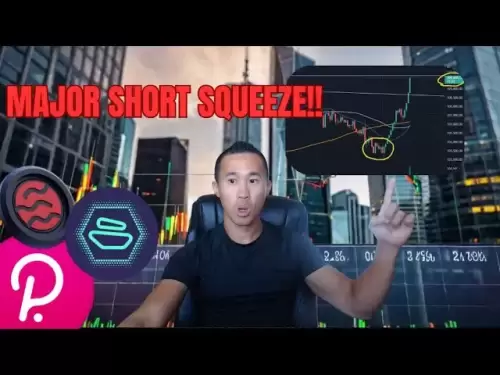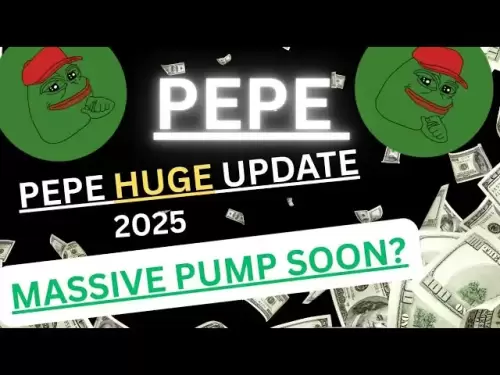-
 Bitcoin
Bitcoin $108,996.1967
2.65% -
 Ethereum
Ethereum $2,568.0446
5.65% -
 Tether USDt
Tether USDt $1.0004
0.02% -
 XRP
XRP $2.2532
3.07% -
 BNB
BNB $659.8395
1.51% -
 Solana
Solana $153.8915
3.45% -
 USDC
USDC $0.9999
-0.02% -
 TRON
TRON $0.2839
0.92% -
 Dogecoin
Dogecoin $0.1696
6.19% -
 Cardano
Cardano $0.5894
6.83% -
 Hyperliquid
Hyperliquid $39.8845
6.55% -
 Sui
Sui $2.8870
7.43% -
 Bitcoin Cash
Bitcoin Cash $501.4074
-0.52% -
 Chainlink
Chainlink $13.5237
4.68% -
 UNUS SED LEO
UNUS SED LEO $9.0168
0.76% -
 Avalanche
Avalanche $18.6548
7.56% -
 Stellar
Stellar $0.2405
4.66% -
 Toncoin
Toncoin $2.8775
3.34% -
 Shiba Inu
Shiba Inu $0.0...01189
4.74% -
 Litecoin
Litecoin $88.6280
5.55% -
 Hedera
Hedera $0.1560
7.09% -
 Monero
Monero $322.9053
2.78% -
 Polkadot
Polkadot $3.5526
7.23% -
 Bitget Token
Bitget Token $4.5886
2.35% -
 Dai
Dai $1.0000
0.00% -
 Ethena USDe
Ethena USDe $1.0001
0.00% -
 Uniswap
Uniswap $7.3492
12.17% -
 Pepe
Pepe $0.0...01023
9.43% -
 Aave
Aave $274.8468
5.51% -
 Pi
Pi $0.4933
1.06%
Can you chase the sudden rebound with large volume after continuous shrinking volume?
A sudden rebound with large volume after shrinking crypto trading volumes may signal genuine buying pressure or manipulation, requiring confirmation through technical indicators and market context.
Jul 02, 2025 at 11:02 am
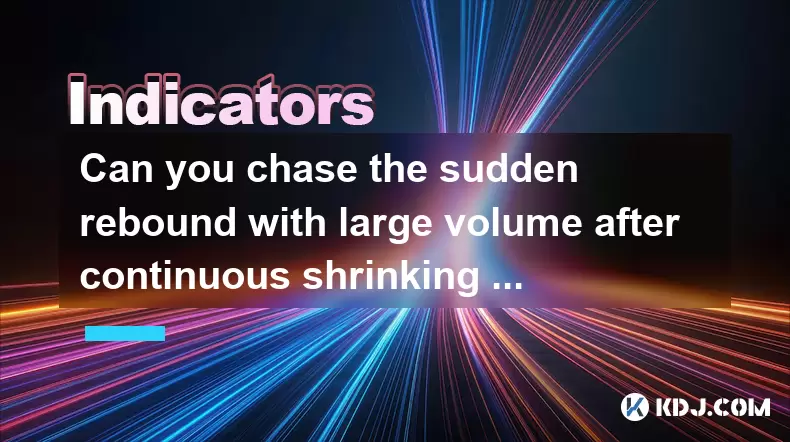
Understanding Volume Patterns in Cryptocurrency Trading
In the world of cryptocurrency trading, volume is one of the most critical indicators for assessing market sentiment and predicting potential price movements. Volume refers to the total number of assets traded over a specific time period, typically measured on a daily basis. When analyzing charts, traders often look at how volume correlates with price action. A continuous shrinking volume indicates declining interest from traders or investors, which may signal an impending consolidation phase or trend reversal.
Shrinking volume during a downtrend or uptrend suggests weakening momentum. This pattern usually precedes a significant shift in market dynamics. However, when this low-volume phase is suddenly followed by a rebound with large volume, it raises questions about whether this surge reflects genuine buying pressure or just short-term noise.
What Causes a Sudden Rebound with Large Volume?
A sudden increase in volume after a prolonged period of declining volume can be attributed to several factors within the crypto market. These include:
- Market manipulation — Whales or institutional players triggering stop-loss orders or creating artificial demand
- News-driven reactions — Positive or negative announcements affecting investor behavior
- Technical level breakouts — Price reaching key support/resistance levels that trigger algorithmic trades
- Short squeezes — Rapid price movement forcing leveraged short sellers to exit positions
Each scenario presents different implications for traders attempting to interpret the legitimacy of the rebound. It's essential to cross-reference volume spikes with other technical tools like moving averages, RSI, or candlestick patterns before making any decisions.
How to Analyze the Legitimacy of a Volume Spike
When evaluating whether a rebound accompanied by high volume is sustainable, traders should consider multiple data points beyond just raw volume numbers. Here's a detailed breakdown of steps to follow:
- Compare current volume to average volume — Use a 10-20 period moving average of volume to determine if the spike is truly exceptional
- Check price reaction post-spike — Did the price continue rising after the volume surge, or did it quickly reverse?
- Analyze order book depth — Look for signs of fake liquidity or wash trading through exchange order books
- Monitor on-chain metrics — Tools like Glassnode or Santiment can show whether real holders are accumulating or distributing
- Use multi-timeframe analysis — Confirm consistency across hourly, four-hourly, and daily charts
Traders must avoid acting solely based on volume without context from broader market conditions. The goal is to distinguish between meaningful shifts and deceptive spikes created by manipulators.
Identifying Fake Volume Spikes
Not all high-volume events reflect real market activity. In the cryptocurrency space, especially on less-regulated exchanges, fake volume remains a persistent issue. Traders should be cautious of the following red flags:
- Lack of corresponding price movement — High volume but no sustained price change
- Unusual bid-ask spread widening — Indicates thin liquidity despite apparent high volume
- Volume concentrated in a single exchange — Especially if it’s a small or unverified platform
- Sudden disappearance of volume after the spike — No continuation in subsequent sessions
Using third-party analytics platforms like CoinGecko or CoinMarketCap can help verify whether the reported volume aligns with actual market participation. Additionally, checking derivatives markets for open interest changes may offer further confirmation.
Strategies for Trading After a Volume Reversal
If you're considering entering a position after observing a sharp rebound with high volume following shrinking volume, here are actionable strategies tailored for both short-term and long-term traders:
- Wait for confirmation candles — Look for bullish engulfing patterns or strong close above resistance levels
- Place entry orders above the high of the volume spike candle — To ensure the move isn't rejected
- Set tight stop losses below the previous low — Protect capital in case the move fails
- Scale into positions gradually — Add more exposure only if volume sustains and price continues higher
- Track accumulation/distribution indicators — On-Balance Volume (OBV) or Chaikin Oscillator can validate smart money moves
Discipline is crucial; chasing entries without proper risk management can lead to significant losses. Always define your reward-to-risk ratio before initiating a trade.
Frequently Asked Questions
Q: Can I rely solely on volume to make trading decisions?
A: No, volume should always be used in conjunction with price action and other technical indicators. Sole reliance on volume can result in false signals, especially in markets prone to manipulation.
Q: How do I differentiate between organic volume and wash trading?
A: Organic volume typically results in lasting price impact and increased open interest in futures markets. Wash trading often shows up as inflated volume without real directional movement or meaningful order book changes.
Q: Should I enter a trade immediately after seeing a high-volume rebound?
A: Immediate entry is risky unless confirmed by additional signals such as breakout confirmation or strong candlestick formations. Waiting for a pullback or retest can provide safer entry opportunities.
Q: What timeframes are best suited for analyzing volume patterns?
A: Higher timeframes like 4-hour or daily charts tend to filter out noise and offer clearer insights. However, combining them with lower timeframes like 15-minute or 1-hour charts can help refine entry timing.
Disclaimer:info@kdj.com
The information provided is not trading advice. kdj.com does not assume any responsibility for any investments made based on the information provided in this article. Cryptocurrencies are highly volatile and it is highly recommended that you invest with caution after thorough research!
If you believe that the content used on this website infringes your copyright, please contact us immediately (info@kdj.com) and we will delete it promptly.
- Meme Coin Mania: Is BTC Bull the Next Big Thing in a Limited Time BTC Bull Run?
- 2025-07-03 12:30:11
- Bitcoin Soars to $109,000: What's Fueling the Crypto Rally?
- 2025-07-03 10:30:13
- Splatterhouse Rocks Retro Scene: A UK Magazine Deep Dive
- 2025-07-03 12:30:11
- Bitcoin, the Senate Bill, and $107K: A Wild Ride on Capitol Hill
- 2025-07-03 12:50:11
- Chainlink's Chart Patterns Hint at a Big Move: Decoding the LINK Price
- 2025-07-03 10:50:12
- Shiba Inu, Solana Uptrend, Bitcoin Breakout: Decoding the Crypto Buzz
- 2025-07-03 10:50:12
Related knowledge
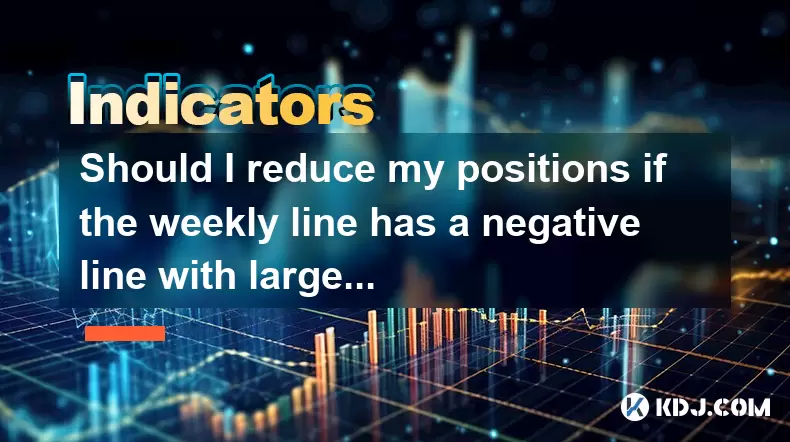
Should I reduce my positions if the weekly line has a negative line with large volume + the daily line falls below the middle Bollinger line?
Jul 01,2025 at 10:50pm
Understanding the Weekly Line with Negative Candle and Large VolumeWhen analyzing cryptocurrency charts, a weekly line that forms a negative candle accompanied by large volume is often interpreted as a strong bearish signal. This pattern suggests that institutional or large traders are actively selling their positions, which can foreshadow further price...
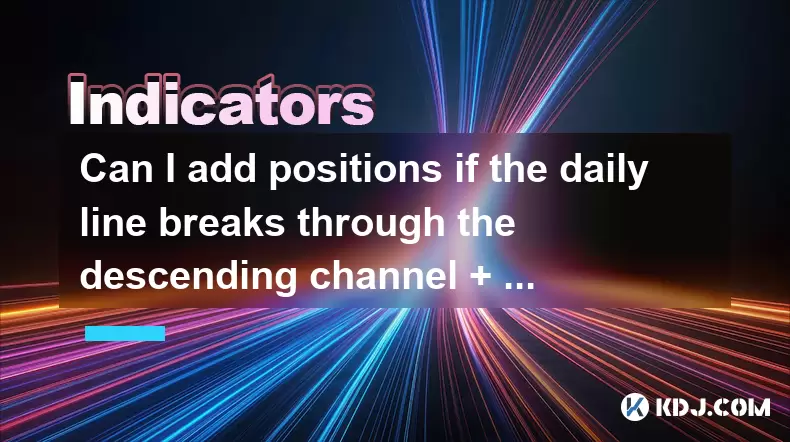
Can I add positions if the daily line breaks through the descending channel + the 30-minute moving average is in a bullish arrangement?
Jun 30,2025 at 11:00pm
Understanding the Descending Channel BreakoutWhen a daily line breaks through a descending channel, it indicates a potential shift in market sentiment from bearish to bullish. A descending channel is formed by drawing two parallel trendlines, where the upper trendline connects the lower highs and the lower trendline connects the lower lows. A breakout o...
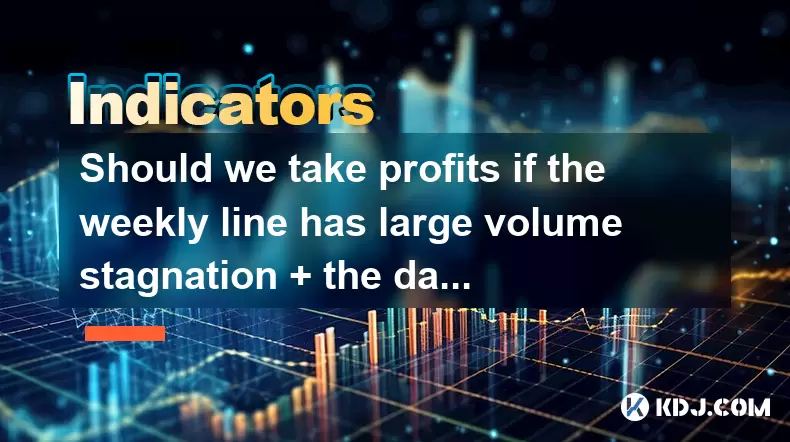
Should we take profits if the weekly line has large volume stagnation + the daily RSI top divergence?
Jul 01,2025 at 05:22pm
Understanding Weekly Volume Stagnation in Cryptocurrency TradingIn cryptocurrency trading, weekly volume stagnation refers to a situation where the total trading volume over a week remains relatively flat or shows no significant increase despite price movements. This phenomenon can indicate that institutional or large traders are not actively participat...
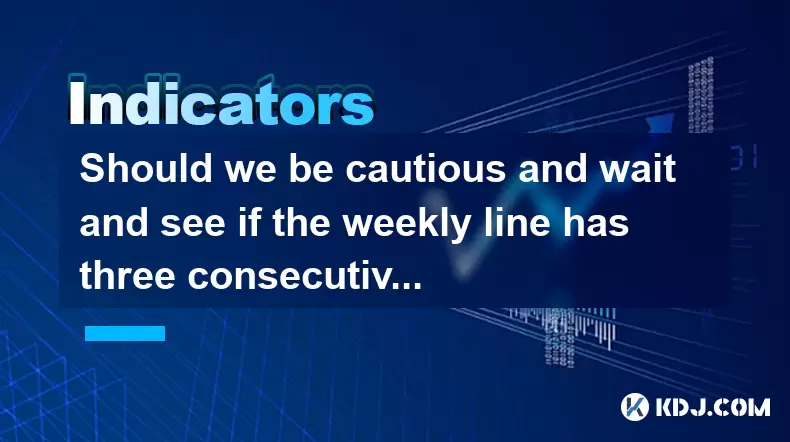
Should we be cautious and wait and see if the weekly line has three consecutive Yin lines + the daily MACD green column enlarges?
Jul 01,2025 at 12:42am
Understanding the Weekly Three Consecutive Yin Lines PatternIn technical analysis, three consecutive Yin lines on a weekly chart indicate a strong bearish trend. Each Yin line represents a week where the closing price is lower than the opening price, signaling consistent selling pressure. When this pattern appears three times in succession, it often sug...
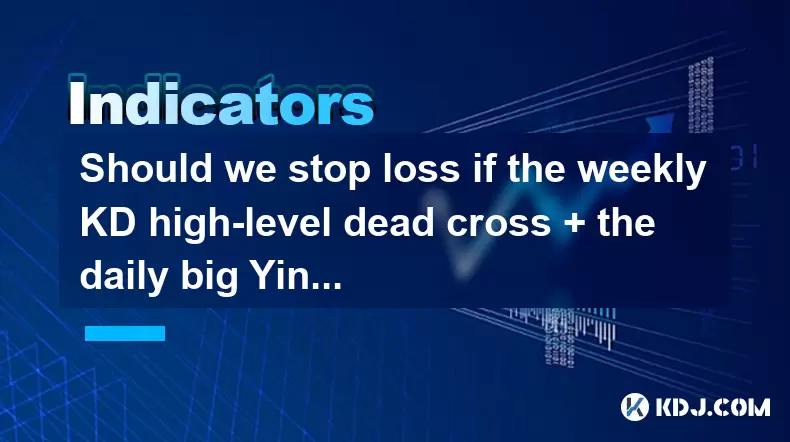
Should we stop loss if the weekly KD high-level dead cross + the daily big Yin line breaks?
Jul 01,2025 at 09:49pm
Understanding the Weekly KD High-Level Dead CrossIn technical analysis, KD (K-D indicator) is a momentum oscillator that helps traders identify overbought or oversold conditions in the market. The weekly KD high-level dead cross occurs when both the K-line and D-line are above 80 (indicating overbought territory), and the K-line crosses below the D-line...
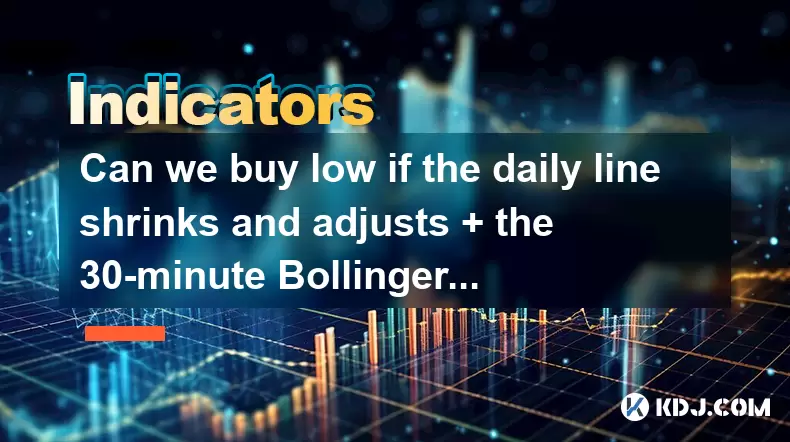
Can we buy low if the daily line shrinks and adjusts + the 30-minute Bollinger lower rail supports?
Jul 02,2025 at 12:29pm
Understanding the Technical Indicators: Bollinger Bands and Daily Line ShrinkingIn cryptocurrency trading, technical indicators play a critical role in identifying potential entry and exit points. The Bollinger Bands consist of a moving average (typically 20 periods) and two standard deviation lines plotted above and below it. When prices touch or appro...

Should I reduce my positions if the weekly line has a negative line with large volume + the daily line falls below the middle Bollinger line?
Jul 01,2025 at 10:50pm
Understanding the Weekly Line with Negative Candle and Large VolumeWhen analyzing cryptocurrency charts, a weekly line that forms a negative candle accompanied by large volume is often interpreted as a strong bearish signal. This pattern suggests that institutional or large traders are actively selling their positions, which can foreshadow further price...

Can I add positions if the daily line breaks through the descending channel + the 30-minute moving average is in a bullish arrangement?
Jun 30,2025 at 11:00pm
Understanding the Descending Channel BreakoutWhen a daily line breaks through a descending channel, it indicates a potential shift in market sentiment from bearish to bullish. A descending channel is formed by drawing two parallel trendlines, where the upper trendline connects the lower highs and the lower trendline connects the lower lows. A breakout o...

Should we take profits if the weekly line has large volume stagnation + the daily RSI top divergence?
Jul 01,2025 at 05:22pm
Understanding Weekly Volume Stagnation in Cryptocurrency TradingIn cryptocurrency trading, weekly volume stagnation refers to a situation where the total trading volume over a week remains relatively flat or shows no significant increase despite price movements. This phenomenon can indicate that institutional or large traders are not actively participat...

Should we be cautious and wait and see if the weekly line has three consecutive Yin lines + the daily MACD green column enlarges?
Jul 01,2025 at 12:42am
Understanding the Weekly Three Consecutive Yin Lines PatternIn technical analysis, three consecutive Yin lines on a weekly chart indicate a strong bearish trend. Each Yin line represents a week where the closing price is lower than the opening price, signaling consistent selling pressure. When this pattern appears three times in succession, it often sug...

Should we stop loss if the weekly KD high-level dead cross + the daily big Yin line breaks?
Jul 01,2025 at 09:49pm
Understanding the Weekly KD High-Level Dead CrossIn technical analysis, KD (K-D indicator) is a momentum oscillator that helps traders identify overbought or oversold conditions in the market. The weekly KD high-level dead cross occurs when both the K-line and D-line are above 80 (indicating overbought territory), and the K-line crosses below the D-line...

Can we buy low if the daily line shrinks and adjusts + the 30-minute Bollinger lower rail supports?
Jul 02,2025 at 12:29pm
Understanding the Technical Indicators: Bollinger Bands and Daily Line ShrinkingIn cryptocurrency trading, technical indicators play a critical role in identifying potential entry and exit points. The Bollinger Bands consist of a moving average (typically 20 periods) and two standard deviation lines plotted above and below it. When prices touch or appro...
See all articles





















